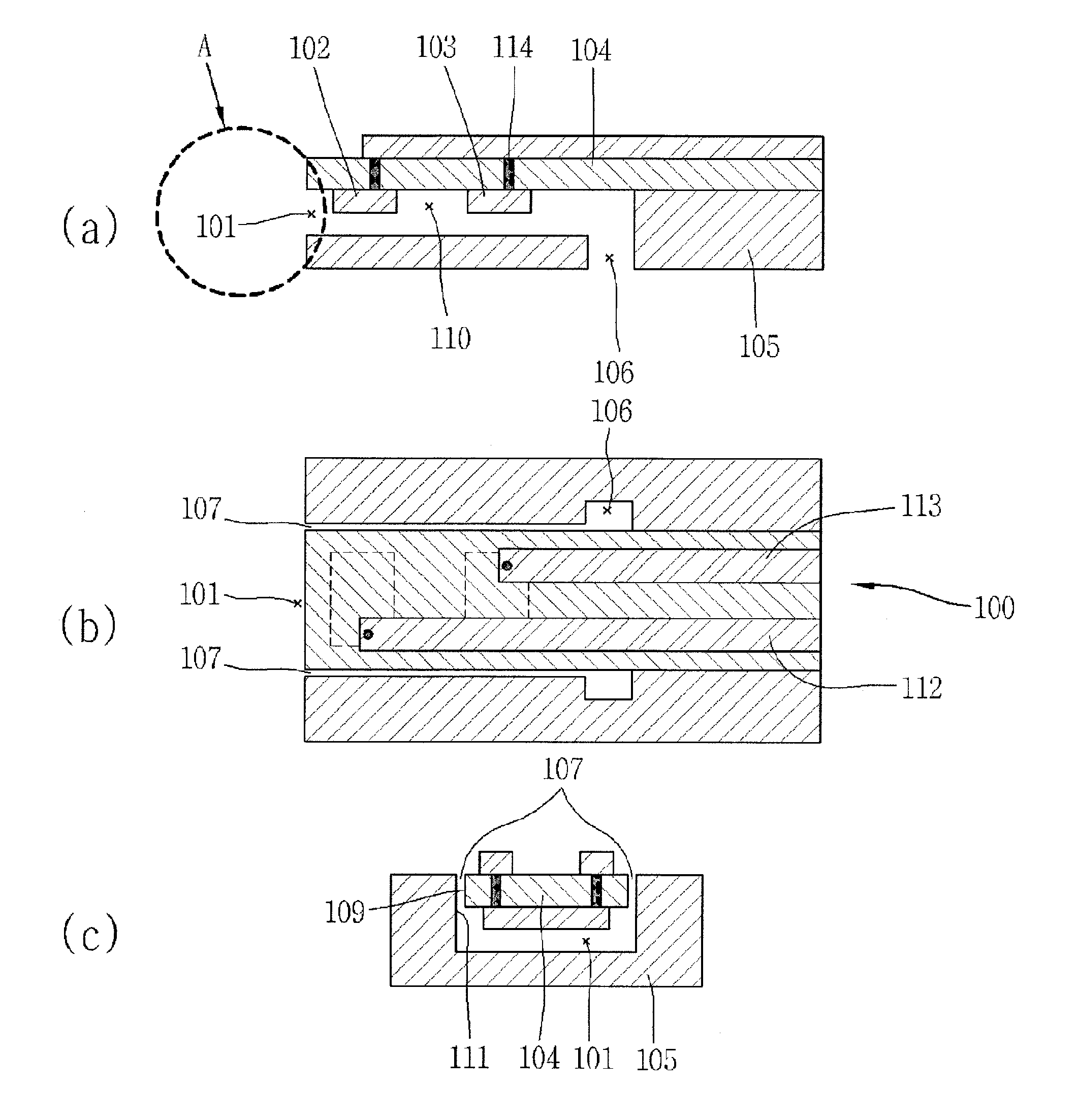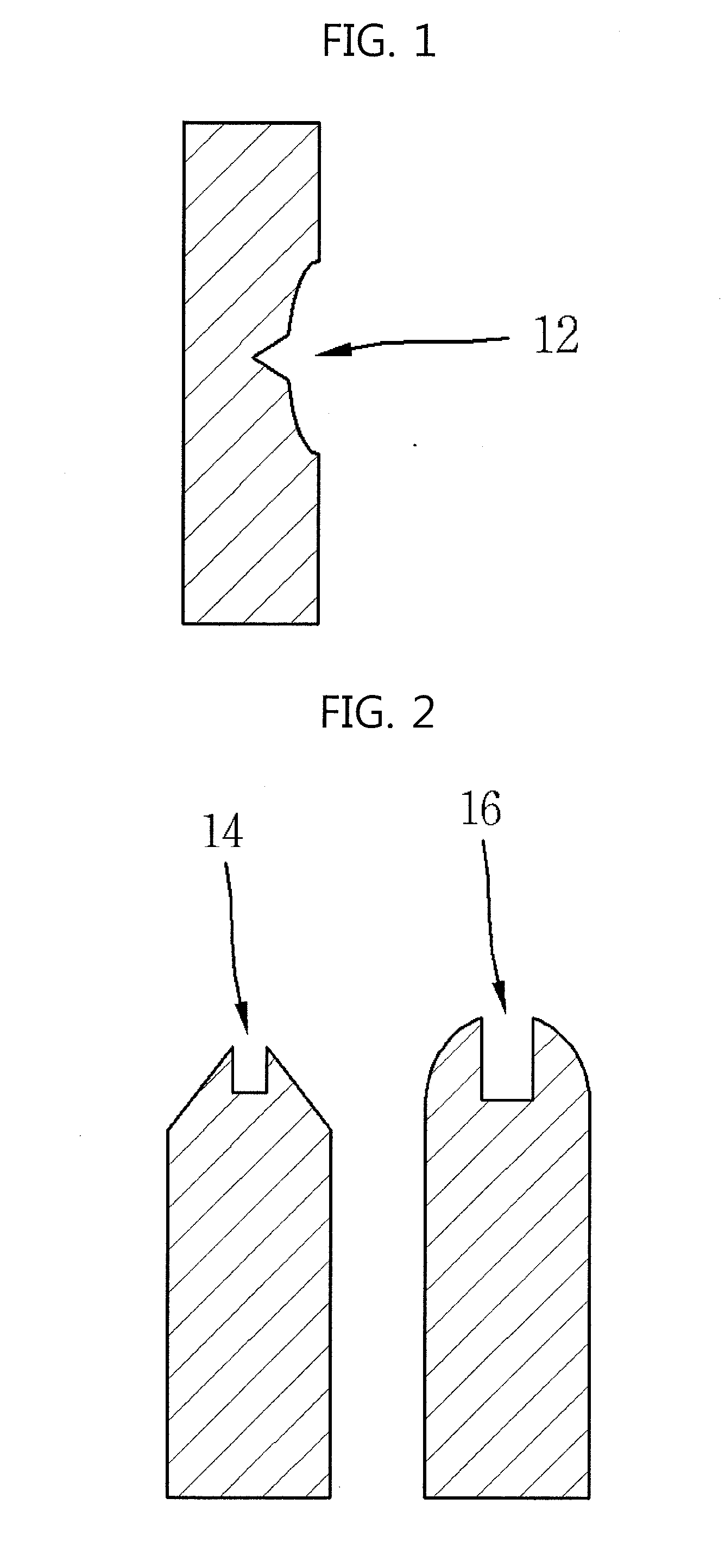Biosensor for measuring biomaterial
a biosensor and biomaterial technology, applied in the field of biosensors for measuring biomaterials, can solve the problems of difficult miniaturization of optical units, large quantity of samples, and long measurement time of optical biosensors, and achieve the effect of constant measured results and substantial thickness
- Summary
- Abstract
- Description
- Claims
- Application Information
AI Technical Summary
Benefits of technology
Problems solved by technology
Method used
Image
Examples
Embodiment Construction
[0025]The foregoing and other objects, features and advantages of the invention will become more apparent from the following detailed description when read in conjunction with the accompanying drawings. Accordingly, it will be easily understood by those skilled in the art that the invention can be modified in various forms without departing from the technical spirit of the invention. In the following description, well-known functions or constructions are not described in detail since they would obscure the invention in unnecessary detail. Exemplary embodiments of the invention will be described below in detail with reference to the accompanying drawings.
[0026]FIG. 3 is a view for explaining the structure of a biosensor according to one embodiment of the present invention. FIG. 3(a) is a side view of the biosensor, FIG. 3(b) is a plan view of the biosensor, and FIG. 3(c) is a front view of the biosensor.
[0027]Referring to FIG. 3, the biosensor according to one embodiment of the prese...
PUM
| Property | Measurement | Unit |
|---|---|---|
| Shape | aaaaa | aaaaa |
| Height | aaaaa | aaaaa |
Abstract
Description
Claims
Application Information
 Login to View More
Login to View More - R&D
- Intellectual Property
- Life Sciences
- Materials
- Tech Scout
- Unparalleled Data Quality
- Higher Quality Content
- 60% Fewer Hallucinations
Browse by: Latest US Patents, China's latest patents, Technical Efficacy Thesaurus, Application Domain, Technology Topic, Popular Technical Reports.
© 2025 PatSnap. All rights reserved.Legal|Privacy policy|Modern Slavery Act Transparency Statement|Sitemap|About US| Contact US: help@patsnap.com



